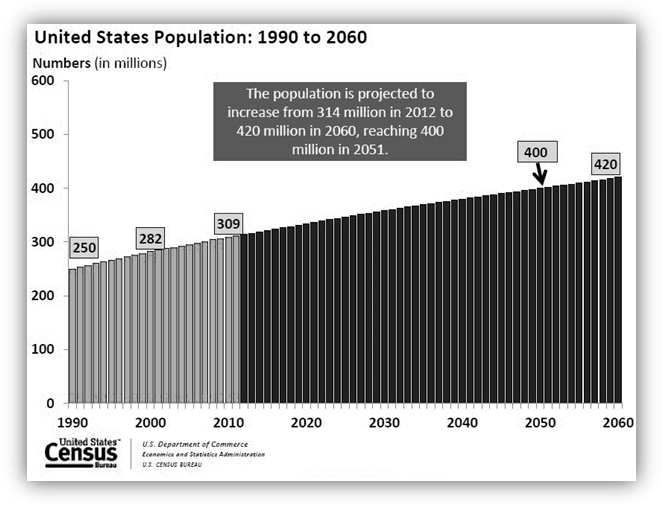Wealth, health, opportunity, prosperity, education and social proximity are the implicit promises of urban life. The world is now home to over seven billion people and the United States to more than three hundred million people
1
. According to the United States Census Bureau, the United States is currently gaining one inhabitant every thirteen seconds.
Urban density is the number of people living in a city per square mile and is on the rise in cities across the United States. There were 27,543 people living in each square mile of New York City in 2012. There were 6,948 people per square mile in New Haven in the same year. New Haven's population increased, per the United States Census bureau, by an estimated 962 people from 2010-2012. That's 51 more people per square mile in just two years. The area described as downtown (census tract 1401) saw a 26.4% increase in population in the ten years since between the 2000 census and the 2010 census. The United States Census Bureau predicts significant population growth over the next 37 years.
1

http://www.census.gov/newsroom/cspan/pop_proj/20121214_cspan_popproj.pdf
Harvard University economist Edward Glaeser believes that education is the most reliable predictor of urban growth (after January temperatures) among older cities.
2
He reasons that an educated city has higher productivity and a higher quality of life and that, in turn, attracts college graduates and sustains population growth. As a satellite of New York City, home to Yale University, and presently in the midst of a robust public education reform movement, New Haven is poised for further population growth.
In July 2012 the Mayor of New York City, Mayor Michael Bloomberg, proposed a very interesting design competition to help meet a perceived housing need. In 2012, New York City determined it required almost one million more one and two-person households to meet demand. The city proposed a design competition for a rental building composed entirely of micro-apartments (apartments approximately 275-300 square feet).
"Developing housing that matches how New Yorkers live today is critical to the City's continued growth, future competitiveness and long-term economic success,"
3
said Mayor Bloomberg. "People from all over the world want to live in New York City, and we must develop a new, scalable housing model that is safe, affordable and innovative to meet their needs."
4
Yale Professor of Architecture Michelle Addington suggested in a Yale-New Haven Teacher's Institute Seminar on April 2, 2013 that energy demand for a high density high rise buildings could offer more than a 50% energy savings per user as the energy required to meet the needs of the individual is shared. City residents use less energy than that of rural residents for a number of reasons (transportation costs and other such potential services that can be amalgamated), one of which being building densities and increased numbers of occupants per square foot allow for energy savings from such expenditures as lighting and heating, ventilation and air conditioning. These opportunities exist in spite of the increased concentration of high energy needs equipment being concentrated concomitantly in the same structure. The important distinction that Professor Addington makes is the consideration of energy consumption per user rather than per building. The assumption for this unit, Designing a MicroApartment, is that the MicroApartments will be clustered in sufficient density to capitalize on shared resources like HVAC systems and could reap energy savings benefits from energy supply models used by organizations like Yale University. For example, Yale's Central Power Plant utilizes a power cogeneration technique that recaptures released heat during electricity generation and further utilizes that high quality thermal energy with the result being significantly higher efficiencies from initial fossil fuel investment (from a Yale Power Plant tour, July 2, 2013). It's design capitalizes on the energy needs of a large community tightly clustered in an urban setting.
This unit, Designing a Micro-Apartment, was developed in light of the trend toward urban densification and in the spirit of Mayor Bloomberg's design competition, adAPT NYC. This unit is a scaled down iteration of Mayor Bloomberg's competition and is offered to the students of New Haven Academy in a new course offering: Introduction to Design.